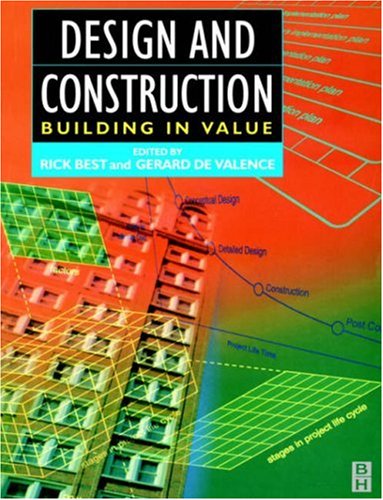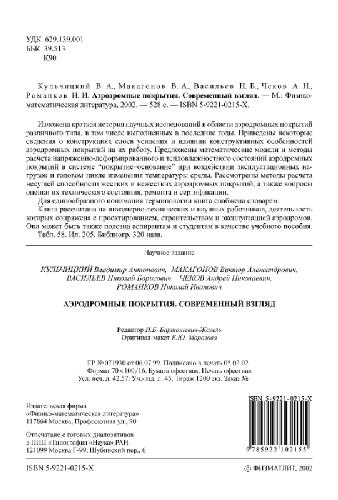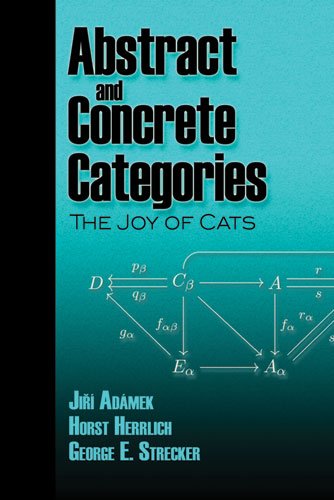Rick Best, Gerard de Valence0750651490, 9780750651493, 9780080491080
Table of contents :
Front Cover……Page 1
Design and Construction: Building in Value……Page 4
Copyright Page……Page 5
Contents……Page 6
Acknowledgements……Page 14
List of Contributors……Page 16
Foreword……Page 22
Preface……Page 24
1.2 Managing design and construction……Page 26
1.3 The design and construction phase……Page 28
1.5 Sustainable construction……Page 29
1.7 Management techniques……Page 30
1.9 Conclusion……Page 31
References and bibliography……Page 32
PART 1: DESIGN AND CONSTRUCTION……Page 34
Editorial comments – Chapters 2 and 3……Page 36
2.1 Introduction……Page 37
2.2 Buildings as prototypes……Page 38
2.3 The modern movement and the international style……Page 39
2.4 Post-modernism and high-tech……Page 40
2.5 Pluralism……Page 42
2.6 A general view……Page 43
References and bibliography……Page 44
3.1 From simple beginnings……Page 45
3.2 The lessons of the castaway: climate and technology……Page 46
3.3 Investigating function……Page 48
3.4 The building as economic commodity……Page 49
3.5 Introducing clients and designers……Page 50
3.6 Constructing the brief……Page 51
3.7 Ideology and framing……Page 54
3.8 Style, language and concept……Page 56
Endnotes……Page 58
References and bibliography……Page 59
Editorial comment……Page 61
4.1 Introduction……Page 62
4.2 The demand for intelligent buildings……Page 63
4.3 Intelligent building systems……Page 66
4.4 The intelligent building communications network……Page 71
4.5 Measuring the ‘intelligence’ of an intelligent building……Page 77
4.6 Conclusion……Page 81
References and bibliography……Page 82
Editorial comment……Page 84
5.1 Introduction……Page 85
5.3 Cost planning……Page 86
5.4 Cost planning philosophies……Page 88
5.5 The budgeting process……Page 91
5.6 The evolution of cost planning……Page 92
5.7 Life-cost planning……Page 95
5.8 Conclusion……Page 97
References and bibliography……Page 99
Editorial comment……Page 100
6.1 Introduction……Page 101
6.2 The energy context……Page 102
6.3 Embodied energy and materials……Page 103
6.4 Embodied energy intensity extraction methodologies……Page 105
6.5 The relevance of embodied energy analysis……Page 107
References and bibliography……Page 112
Editorial comment……Page 116
7.1 Introduction……Page 117
7.3 Modelling requirements, procedures and outputs……Page 119
7.4 Case studies……Page 121
7.5 Conclusion……Page 133
References and bibliography……Page 134
Editorial comment……Page 135
8.2 Evolution of the buildability/constructability concept……Page 136
8.3 CIIA and BPRG – constructability implementation……Page 145
8.4 Project fitness landscapes……Page 147
8.5 Innovating design and construction with buildability/constructability……Page 148
References and bibliography……Page 149
Editorial comment……Page 151
9.2 An introduction to building control systems……Page 152
9.3 Administrative provisions versus technical provisions……Page 153
9.4 The basic components of a performance-based regulatory system……Page 154
9.5 Technical provisions – prescriptive-based versus performance-based……Page 157
9.6 Benefits of performance-based regulations……Page 158
9.7 The structure of the performance-based building codes……Page 159
9.8 Fire engineered building design……Page 162
9.9 Conclusion……Page 169
References and bibliography……Page 170
Editorial comment……Page 174
10.1 Introduction……Page 175
10.2 Characteristics of project finance……Page 176
10.3 Project agreements……Page 177
10.4 Project finance participants……Page 179
10.5 Project risks and financial security……Page 181
10.6 Financing build, operate and transfer (BOT) projects……Page 183
10.7 Conclusion……Page 188
References and bibliography……Page 189
Editorial comment……Page 191
11.1 Introduction……Page 192
11.3 Project management……Page 193
11.4 The players……Page 199
11.5 How project management changes process management practice……Page 201
References and bibliography……Page 204
Editorial comment……Page 205
12.2 What is risk?……Page 206
12.3 Justice and commercial issues arising from transfer of risk……Page 207
12.4 Legal basis of shifting construction risks from one contractual party to another……Page 209
12.5 Disputes with the labour force……Page 211
12.6 Inclement weather……Page 213
12.7 Scope of works/latent conditions……Page 215
12.8 Conclusion……Page 218
References and bibliography……Page 219
Editorial comment……Page 220
13.1 Introduction……Page 221
13.2 Definition of contaminated land……Page 222
13.3 Causes of contaminated land……Page 223
13.5 The identification of contaminated land……Page 224
13.6 Risk assessment and estimation……Page 226
13.7 Planning, design and implementation of remediation……Page 228
13.8 Case studies……Page 231
13.9 Conclusion……Page 233
References and bibliography……Page 234
Editorial comment – Chapters 14 and 15……Page 236
14.2 Theoretical considerations……Page 237
14.3 Why conventional construction project management fails……Page 240
14.4 Lean project delivery in construction……Page 242
14.5 Implementation……Page 246
14.6 Conclusion……Page 249
References and bibliography……Page 250
15.2 Lean production management……Page 252
15.3 Lean design……Page 262
15.4 Lean supply……Page 267
15.5 Lean assembly……Page 273
References and bibliography……Page 278
Editorial comment……Page 281
16.1 Introduction……Page 282
16.2 The problem of resource depletion……Page 283
16.3 The sustainability agenda……Page 284
16.4 Unsustainability in the construction industry……Page 285
16.5 Good practice in solid waste management……Page 287
16.6 Case study: Colonial Stadium site, Melbourne……Page 291
16.7 Survey of waste management attitudes of construction site operatives……Page 294
16.8 Waste as a resource……Page 296
16.9 Conclusion……Page 297
References and bibliography……Page 298
Editorial comment……Page 301
17.1 Introduction……Page 302
17.2 History and overview of benchmarking……Page 303
17.3 Key performance indicators for construction and design enterprises……Page 305
17.5 Profitability/efficiency……Page 306
17.6 Financial management……Page 310
17.8 Investing in the future……Page 312
17.9 Conclusion……Page 314
References and bibliography……Page 315
Editorial comment……Page 316
18.1 Introduction……Page 317
18.2 Using CAD modelling in building systems……Page 318
18.3 Advantages of using three-dimensional CAD modelling in building design and construction……Page 321
18.4 Using three-dimensional CAD modelling as a means of useful knowledge sharing……Page 322
18.5 An object-oriented approach for three-dimensional CAD modelling……Page 323
18.6 Three-dimensional CAD modelling supports co-ordination……Page 324
18.7 Sharing a three-dimensional CAD model among various disciplines……Page 325
18.8 Three-dimensional CAD modelling for building systems maintenance……Page 326
18.10 Intelligent three-dimensional CAD objects……Page 327
18.11 Conclusion……Page 328
References and bibliography……Page 329
Editorial comment……Page 331
19.2 Importance……Page 332
19.3 Main forms of administration……Page 334
19.4 Administration under different procurement systems……Page 336
19.5 Key areas……Page 337
19.6 Effective contract administration and claims avoidance……Page 342
19.7 Administration trends……Page 347
References and bibliography……Page 351
Editorial comment……Page 353
20.1 Introduction……Page 354
20.2 Occupational health and safety (OHS) legislation……Page 355
20.3 Stages in the implementation of an occupational health and safety management system……Page 356
20.5 Organization of construction work……Page 358
20.6 Buying safe construction……Page 360
20.7 Pre-planning project occupational health and safety……Page 361
20.8 Managing sub-contractors……Page 364
20.9 Adding value through occupational health and safety……Page 365
20.10 The UK’s construction design and management (CDM) regulations experience……Page 367
20.11 Cultural and motivational issues……Page 368
20.12 Conclusion……Page 373
References and bibliography……Page 375
Editorial comment……Page 379
21.1 Introduction……Page 380
21.2 Construction safety regulations……Page 381
21.3 ISO 9000 quality management systems (QMS)……Page 382
21.4 Matching safety requirements with ISO 9000……Page 391
21.5 Conclusion……Page 395
References and bibliography……Page 396
PART 3: INNOVATION IN DESIGN AND CONSTRUCTION……Page 398
Editorial comment……Page 400
22.1 Introduction……Page 401
22.2 Research intensity……Page 403
22.3 Research and development (R&D) and market structure……Page 404
22.4 Procurement and innovation……Page 405
22.5 Regulatory environment……Page 406
22.6 Competitiveness……Page 407
22.7 Conclusion……Page 409
References and bibliography……Page 410
Editorial comment……Page 412
23.1 Introduction……Page 413
23.2 The psychology of management fads……Page 414
23.3 The fear of not changing……Page 416
23.4 The problems with business fads……Page 417
23.5 Conclusion……Page 421
References and bibliography……Page 422
Editorial comment……Page 424
24.1 Introduction……Page 425
24.3 Challenges of the project……Page 426
24.4 Building the models……Page 427
24.5 Impact of representation of project information……Page 429
24.6 Impact of four-dimensional model on communication……Page 431
24.7 Impact on management and culture……Page 436
24.8 Level of detail……Page 438
24.9 Conclusion……Page 440
References and bibliography……Page 441
Editorial comment……Page 443
25.1 Introduction……Page 444
25.2 New materials and technologies……Page 445
25.3 New construction technologies……Page 455
25.4 Prefabrication and industrialized buildings……Page 456
25.5 Conclusion……Page 457
References and bibliography……Page 458
Editorial comment……Page 460
26.1 Introduction……Page 461
26.2 Construction robots……Page 462
26.3 European research……Page 464
26.4 United States robots……Page 467
26.5 Development of Japanese robots……Page 468
26.6 Automated building systems……Page 471
References and bibliography……Page 476
Editorial comment……Page 480
27.2 Heating ventilation and air conditioning……Page 481
27.3 Operable natural systems……Page 487
27.4 Energy supply……Page 493
27.5 Plumbing……Page 498
27.6 Communications……Page 499
27.7 Security systems……Page 500
27.9 Electric lighting……Page 501
27.10 Conclusion……Page 504
References and bibliography……Page 505
28.1 Introduction……Page 507
28.2 The management of design and construction……Page 508
28.3 Change drivers……Page 509
28.4 Conclusion……Page 512
Reference……Page 513
Index……Page 514







Reviews
There are no reviews yet.